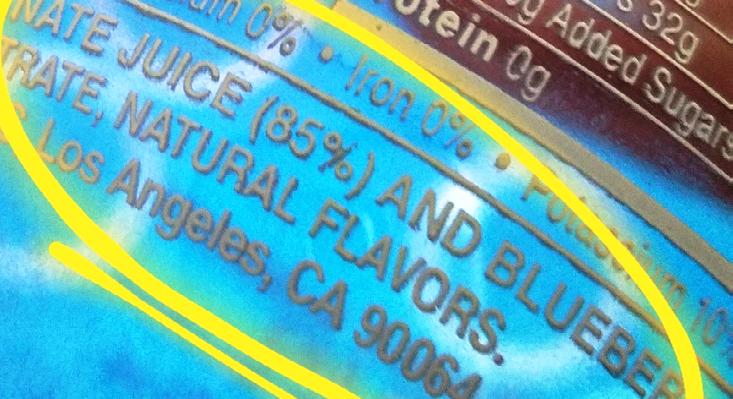
3 minute read
Food for Thought
by Paula Jacobus, Nutrition and Education Committee
What is a Natural Flavor?
Thousands of natural flavors are used in processed foods ranging from the essential oils of orange and lemon peels produced in a lab and are found mainly in
(limonene) and vanilla extract (vanillin) to monosodium glutamate (MSG), GMO soy sauce, hydrolyzed protein product (HPP), and hydrolyzed vegetable protein (HVP), to name a few. “Natural flavors” sounds fine, but are they really natural?
A natural flavor’s significant function in food is for flavor rather than for nutrition, with its aroma or flavor chemicals derived from a single plant or animal source. As with all nonorganic processed foods,
These sources include spices, fruits and/ or vegetables, including their respective juices, edible yeast, herb, bark, bud, root, or similar plant material, meat, seafood, poultry, eggs, and dairy products. Food technologists take a natural food source (such as a fruit or spice) and find ways to extract chemicals that capture only that
Are “natural flavors” really what we think of as natural and healthy? While food processors must list all of the ingredients on a food label, flavor manufacturers do not have to disclose ingredients. Despite the name, most nonorganic natural flavors are processed foods.
ral and artificial flavor can be exactly the same and sometimes artificial flavors may have fewer chemicals than natural ones.
food’s taste. This can be an essential oil, resin, extract, essence, distillate, or any process of heating, roasting, cold pressing, fermentation, or centrifuging, all according to government guidelines. But “natural flavors” cannot contain arnot chemically modified in any way that a research and advocacy organization,
(GRAS). More than 2,000 other chemicals current regulations do not restrict the dozens of other ingredients including preservatives, solvents, emulsifiers, carriers, and other additives that may be added to a socalled natural flavor. These are called incidental additives, which means the manufacturer does not have to disclose their presence on food labels. Natural flavors (and artificial flavors) may contain undisclosed additives that could pose a potential health risk depending on an individual’s specific food allergies, intolerances, and sensitivity concerns. Some food safety advocates recommend people with food allergies or dietary restrictions avoid altogether these food flavorings with undisclosed ingredients.
This is hard to do when food manufacturers add them to a surprising number of basic items: not just to highly processed foods like candy, granola bars, and frozen dinners but also to some cold cereals, flavored yogurts, canned soups, and spaghetti sauces—even to some apple sauces and ice creams.
Those at risk should routinely research ingredients that are vague or unclear to find exactly where these flavors come from. As an example, the simple fact that McDonald’s says its “natural beef flavor” is derived from wheat and milk should raise awareness and prompt the desire to know
tificial preservatives, cannot be derived from the contaminant hexane, and are makes them different from their natural state.
Artificial flavors are synthesized in a lab and use one of 700 FDA-allowed flavoring chemicals or food additives that are characterized “generally recognized as safe” are also used for artificial flavors that are not directly FDA-regulated but sanctioned for use by the Flavor and Extract Manufacturers Association of the United States. Most of these chemicals exist as natural flavors or can be extracted from them.
According to David Andrews, a scientist at the Environmental Working Group (EWG), more!
there is little difference between natural and artificial flavors because of the wide variety of ingredients that typically go into natural flavorings.
EWG’s food scores—rating more than 80,000 foods on their degree of nutrition, ingredients, and processing concern—reveal “natural flavor” as the fourth most common ingredient listed right after salt, water, and sugar! Another popular, healthier place we see natural flavors pop up is on the label of fruity seltzer waters. Thanks to the science of flavor extraction, the natural flavor of a fruit is added by distilling its essence and adding it in very small quantities that don’t contribute to the drink’s calories. Natural flavors here are a better choice but, even so, labels should always be read to make sure that other ingredients such as artificial sweeteners aren’t also added.
Natural flavors used in certified organic foods are subject to a different, far more restrictive set of regulations. They cannot contain certain ingredients, including synthetic solvents, carriers, and emulsifiers or artificial preservatives, according to the Organic Trade Association. They must use non-petroleum-based solvents, cannot be irradiated, and cannot use flavor extracts derived from genetically engineered crops.




